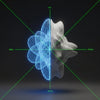
Laser Cutting vs Plasma Cutting: 5 Key Decision Factors
Deciding between laser cutting vs plasma cutting? Compare precision, cost, speed, and material thickness to find the most profitable choice for your shop.

From Code to Creation: 5-Axis CNC for Artistic Projects
Discover how 5-axis CNC technology transforms artistic and sculptural projects. Learn to create complex 3D forms with unparalleled precision and bring your vision to life.

Unlock Better Products with Essential DFM Feedback
Learn how effective Design for Manufacturability (DFM) feedback reduces costs, speeds up development, and prevents costly errors. Master the DFM review process.

Mastering Design for Manufacturability (DFM) for Quality
Learn how Design for Manufacturability (DFM) reduces costs, accelerates production, and improves product quality. Discover key principles and practical steps.

Rapid Tooling Services: Your Bridge to Market Production
Discover how rapid tooling services accelerate product development. Learn about key technologies, cost benefits, and when to use this method for low-volume production.

Unlock Agility With On-Demand Manufacturing Solutions
Explore on-demand manufacturing solutions to reduce costs, accelerate time-to-market, and boost innovation. Learn how technologies like 3D printing transform production.

From Prototype to Production: A Step-by-Step Pathway
Navigate the complex journey from prototype to production. Learn the critical stages, overcome key manufacturing challenges, and successfully launch your product.

Exploring Formative Manufacturing Solutions and Processes
Discover the core principles of formative manufacturing solutions. Learn how processes like injection molding and casting compare to additive and subtractive methods.





